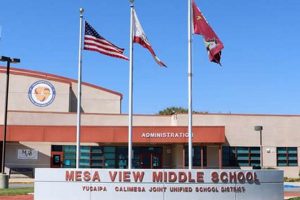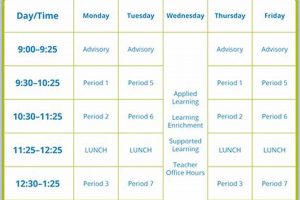Initial classroom experiences for students in grades six through eight often involve icebreakers, introductory exercises, and activities designed to establish classroom community and expectations. These might include collaborative projects, games focused on learning classmates’ names, or sharing personal goals for the academic year. For example, students might work together to create a classroom contract or participate in a “get-to-know-you” scavenger hunt.
A positive start to the academic year can significantly influence a student’s overall engagement and success. Well-structured opening activities ease the transition back into the learning environment, reducing anxiety and fostering a sense of belonging. They also provide educators with crucial insights into student dynamics and individual learning styles, allowing for more effective teaching strategies throughout the year. Historically, the focus of the first day has evolved from purely administrative tasks to an emphasis on student well-being and creating a welcoming atmosphere.
The following sections will delve into specific examples of successful opening day activities categorized by subject area and overall learning objective, offering practical guidance for educators seeking to create a positive and productive first day of middle school.
Tips for Successful First Day Activities
Careful planning and execution of initial classroom experiences are crucial for establishing a positive and productive learning environment. The following tips offer guidance for educators developing activities appropriate for students in grades six through eight.
Tip 1: Prioritize Community Building: Activities should focus on fostering a sense of belonging and encouraging students to connect with each other. Examples include icebreakers, partner interviews, and collaborative projects.
Tip 2: Establish Clear Expectations: Communicate classroom rules, procedures, and expectations for behavior clearly and concisely. Consider involving students in the creation of a classroom contract to promote ownership and accountability.
Tip 3: Incorporate Interactive Elements: Passive activities can lead to disengagement. Games, technology integration, and hands-on projects promote active participation and enhance learning.
Tip 4: Cater to Diverse Learning Styles: Offer a variety of activities to address different learning preferences. Incorporate visual, auditory, and kinesthetic elements to ensure inclusivity.
Tip 5: Connect Activities to Curriculum: Integrate subject-specific content into opening day activities to introduce key concepts and spark student interest. This can set the stage for future learning.
Tip 6: Maintain a Positive and Encouraging Atmosphere: Enthusiasm is contagious. A positive and welcoming demeanor from the educator sets the tone for the entire year.
Tip 7: Gather Feedback: Solicit student feedback on the activities to gauge their effectiveness and identify areas for improvement in future years.
By implementing these strategies, educators can cultivate an engaging and supportive learning environment, laying a solid foundation for student success throughout the academic year.
These insights offer practical guidance for designing effective opening day activities. The final section will offer concluding thoughts and emphasize the long-term benefits of a well-planned first day.
1. Icebreakers
Icebreakers play a crucial role in first-day middle school activities, serving as a bridge between the summer break and the new academic year. They facilitate introductions, alleviate anxiety, and establish a foundation for classroom community. Effective icebreakers encourage interaction and foster a sense of belonging, setting a positive tone for subsequent learning.
- Easing Social Anxiety
The transition to middle school, or a new classroom environment, can be anxiety-inducing for students. Icebreakers provide a structured, low-stakes opportunity for interaction, helping students feel more comfortable and less self-conscious. Activities like “Would You Rather” or “Find Someone Who” encourage communication and help students discover common interests, easing the pressure of initial social interactions.
- Facilitating Introductions and Learning Names
Learning classmates’ names is essential for building a sense of community. Icebreakers offer a fun and engaging way to accomplish this. Activities such as name games, chain introductions, or student-created name tents combine memorization with interaction, making the process more enjoyable and effective.
- Building Classroom Community
A strong classroom community promotes collaboration and positive peer relationships. Icebreakers can contribute to this foundation by encouraging students to work together, communicate effectively, and appreciate individual differences. Collaborative tasks, group problem-solving activities, or shared creative projects foster a sense of unity and mutual respect.
- Setting a Positive Classroom Tone
The first day of school sets the tone for the entire year. Icebreakers contribute to a positive and welcoming atmosphere by encouraging laughter, fostering a sense of fun, and reducing stress. A positive initial experience increases student engagement and receptiveness to learning throughout the year.
Successfully implemented icebreakers contribute significantly to the overall success of first-day middle school activities. By fostering connection, reducing anxiety, and creating a positive classroom environment, these initial interactions lay a critical foundation for a productive and engaging academic year.
2. Community Building
Community building forms a cornerstone of successful first-day activities in middle school. A cohesive classroom environment fosters student engagement, encourages collaboration, and supports academic achievement. Initial activities designed to promote community lay the groundwork for a positive and productive learning environment throughout the academic year.
- Shared Goals and Values
Establishing shared goals and values provides a unifying framework for the classroom community. Activities such as collaboratively creating classroom rules or discussing expectations for behavior promote a sense of ownership and shared responsibility. When students contribute to the development of classroom norms, they are more likely to adhere to them and hold each other accountable. This shared understanding fosters mutual respect and cooperation.
- Positive Relationships
Fostering positive relationships between students and between students and educators is crucial for a supportive learning environment. Icebreaker activities, team-building exercises, and opportunities for peer interaction contribute to the development of positive relationships. When students feel comfortable and connected to their peers and teachers, they are more likely to participate actively, take risks, and seek support when needed. A positive classroom climate, built upon strong relationships, improves overall student well-being and academic performance.
- Open Communication
Creating a culture of open communication encourages students to express their thoughts, ideas, and concerns freely. Activities that involve sharing personal goals, participating in class discussions, or providing constructive feedback contribute to open communication. When students feel safe and respected, they are more willing to contribute to classroom dialogue and engage in meaningful learning experiences. Open communication also strengthens the teacher-student relationship, allowing educators to better understand and address individual student needs.
- Inclusive Environment
An inclusive environment values diversity and ensures that all students feel welcome and respected. Activities that celebrate individual differences, promote understanding of various cultures and backgrounds, and address issues of equity and inclusion contribute to a positive classroom community. When students feel valued and accepted for who they are, they are more likely to engage fully in the learning process and contribute their unique perspectives. An inclusive environment fosters a sense of belonging and promotes empathy and respect among students.
These facets of community building are essential for creating a positive and productive learning environment in middle school. By incorporating these elements into first-day activities, educators establish a foundation for a strong classroom community, which supports student engagement, academic achievement, and overall well-being throughout the school year. A strong sense of community empowers students to thrive academically and socially within a supportive and inclusive learning environment.
3. Expectation Setting
Expectation setting is integral to successful first-day activities in middle school. Clear communication of academic and behavioral expectations establishes a framework for the entire year. This proactive approach minimizes disruptions, promotes student accountability, and cultivates a positive learning environment. Effective expectation setting clarifies appropriate classroom behavior, assignment guidelines, and procedures for seeking assistance. For example, outlining procedures for entering the classroom, transitioning between activities, or submitting assignments reduces ambiguity and streamlines daily routines. This clarity empowers students to navigate the classroom environment confidently and contributes to a sense of order and predictability.
Explicitly addressing behavioral expectations fosters a respectful and productive learning space. Defining acceptable conduct regarding peer interactions, technology use, and classroom discussions establishes clear boundaries. When students understand the parameters of acceptable behavior, they are more likely to adhere to them. This reduces the likelihood of disruptions and allows for more focused instructional time. Furthermore, establishing clear expectations for academic performance motivates students to strive for excellence. Communicating grading policies, assignment requirements, and late submission procedures clarifies performance standards and fosters a sense of responsibility. This transparency promotes student ownership of their academic progress.
Successful expectation setting necessitates not only clear communication but also student involvement. Engaging students in the development of classroom norms fosters a sense of ownership and shared responsibility. Collaborative activities, such as creating a classroom contract or discussing expectations in small groups, empower students to contribute to the learning environment. This collaborative approach strengthens student buy-in and promotes a sense of community. Ultimately, well-defined expectations, coupled with student involvement, establish a foundation for a positive and productive academic year. This proactive approach minimizes disruptions, maximizes instructional time, and cultivates a learning environment conducive to student success.
4. Curriculum Introduction
Curriculum introduction during the first day of middle school establishes a crucial link between students’ prior learning experiences and the upcoming academic journey. A well-structured introduction sparks student interest, clarifies learning objectives, and sets the stage for a year of engaging academic exploration. It provides students with a roadmap of the curriculum, highlighting key concepts and skills they will develop throughout the year. This initial overview establishes a foundation for future learning and fosters a sense of purpose and direction.
- Creating Excitement and Engagement
Enthusiasm for learning is often most potent at the beginning of the school year. Capitalizing on this natural curiosity, educators can introduce curriculum elements in engaging ways. Interactive activities, demonstrations, or multimedia presentations can pique student interest and generate excitement about upcoming topics. For instance, a science teacher might conduct a simple experiment demonstrating a core concept, or a history teacher could present a captivating historical artifact. This approach sparks curiosity and motivates students to delve deeper into the subject matter throughout the year.
- Connecting to Prior Knowledge
Effective curriculum introductions build bridges between students’ existing knowledge and new concepts. Activities that activate prior learning provide a familiar starting point and facilitate the assimilation of new information. For example, a math teacher might review fundamental concepts from the previous grade level before introducing new algebraic principles. This approach ensures a smooth transition and reduces cognitive overload, allowing students to build upon existing knowledge confidently.
- Previewing Key Concepts and Skills
Providing a preview of key concepts and skills equips students with a roadmap for the academic year. Outlining major topics, learning objectives, and assessment methods clarifies expectations and provides a sense of direction. A language arts teacher might preview the different genres of literature students will explore, while a social studies teacher could outline the historical periods they will cover. This preview enables students to approach the curriculum with a clear understanding of the learning journey ahead.
- Establishing Learning Objectives
Clearly defined learning objectives provide students with a tangible understanding of what they are expected to achieve. These objectives should be measurable, achievable, relevant, and time-bound. Communicating these objectives upfront allows students to focus their efforts and track their progress throughout the year. For example, a science teacher might state that students will be able to conduct independent scientific investigations by the end of the semester. This clarity empowers students to take ownership of their learning and strive towards specific goals.
A thoughtful curriculum introduction on the first day sets the tone for a year of engaging and productive learning. By fostering excitement, connecting to prior knowledge, and providing a clear roadmap of the curriculum, educators empower students to embark on their academic journey with confidence and a sense of purpose. This initial investment in curriculum introduction contributes significantly to student engagement and academic success throughout the school year.
5. Interactive Learning
Interactive learning plays a vital role in successful first-day middle school activities. It transforms passive recipients of information into active participants, fostering engagement and enhancing knowledge retention. Interactive activities cater to diverse learning styles, promote collaboration, and create a more dynamic and enjoyable learning experience. This approach sets a positive tone for the academic year, encouraging active participation and a deeper understanding of the curriculum.
- Enhanced Engagement
Interactive activities combat passive listening and promote active participation. Instead of simply absorbing information, students engage directly with the content through games, group projects, and discussions. This active involvement increases attention spans, stimulates critical thinking, and fosters a deeper understanding of the material. For example, a “human bingo” icebreaker encourages interaction and helps students learn about their classmates, while a collaborative brainstorming session about classroom rules promotes ownership and engagement.
- Improved Knowledge Retention
Active participation inherent in interactive learning strengthens knowledge retention. When students actively manipulate information, apply concepts, and engage in discussions, they process the material more deeply. This deeper processing leads to better understanding and longer-lasting retention. Hands-on activities, simulations, and problem-solving exercises facilitate this process. For instance, a science experiment conducted on the first day allows students to apply scientific principles directly, reinforcing their understanding and fostering a positive association with the subject.
- Catering to Diverse Learning Styles
Interactive learning accommodates diverse learning styles by incorporating various modalities. Visual learners benefit from graphic organizers and multimedia presentations, while auditory learners thrive in discussions and debates. Kinesthetic learners engage through hands-on activities and movement-based exercises. By offering a variety of interactive experiences, educators ensure that all students have opportunities to learn and engage in ways that resonate with their individual learning preferences. A classroom activity involving visual aids, group discussion, and hands-on elements caters to a broader range of learning styles than a traditional lecture format.
- Promoting Collaboration and Communication
Many interactive activities inherently promote collaboration and communication. Group projects, peer teaching, and team-building exercises require students to work together, share ideas, and communicate effectively. These experiences develop crucial social skills, foster a sense of community, and enhance problem-solving abilities. For instance, a collaborative project where students create a classroom mural allows them to contribute their individual talents while working towards a shared goal, fostering both creativity and collaboration.
Incorporating interactive learning into first-day activities creates a dynamic and engaging learning environment. By promoting active participation, catering to diverse learning styles, and fostering collaboration, educators establish a foundation for a successful and enjoyable academic year. This approach not only strengthens knowledge retention but also cultivates essential social and problem-solving skills, enriching the overall learning experience for middle school students.
Frequently Asked Questions
Addressing common queries regarding initial middle school experiences helps educators and families prepare effectively. The following FAQs offer practical insights and address potential concerns.
Question 1: How can educators create a welcoming classroom environment on the first day?
A welcoming environment can be established through intentional activities. Icebreakers, introductory games, and collaborative projects help students connect and foster a sense of belonging. Clearly communicating classroom expectations and procedures also reduces anxiety and promotes a sense of order.
Question 2: What are some effective icebreakers for middle school students?
Effective icebreakers encourage interaction and create a comfortable atmosphere. Activities like “Two Truths and a Lie,” “Find Someone Who,” or student-created name tents facilitate introductions and help students learn about each other. Low-stakes team-building activities also encourage collaboration and build camaraderie.
Question 3: How can the first day’s activities be aligned with curriculum objectives?
Integrating curriculum-related content into introductory activities provides a preview of the year’s learning journey. For instance, a math teacher might incorporate a number-based icebreaker, or a language arts teacher could have students engage in a collaborative storytelling activity. This approach connects initial activities to academic content, sparking student interest and establishing a foundation for future learning.
Question 4: What strategies can help students with the transition to middle school?
Transitioning to middle school can be challenging. Clear communication, consistent routines, and a supportive classroom environment ease this process. Providing students with opportunities to connect with peers, express their concerns, and familiarize themselves with the school layout reduces anxiety and promotes a smoother transition. Orientation programs, peer mentorship initiatives, and open communication with families further support successful transitions.
Question 5: How can educators address diverse learning styles during first-day activities?
Offering a variety of activities caters to diverse learning preferences. Incorporating visual, auditory, and kinesthetic elements ensures inclusivity. For example, using visual aids alongside verbal instructions, incorporating group discussions, and offering hands-on activities provide multiple avenues for engagement. This approach ensures all students have opportunities to learn and participate in ways that resonate with their individual learning styles.
Question 6: How can families support their children during the first week of middle school?
Open communication and encouragement from families play a vital role in supporting students. Discussing expectations, addressing concerns, and celebrating small successes create a positive and reassuring environment. Establishing consistent routines, providing a dedicated study space, and maintaining open communication with the school further support student adjustment and academic success.
Preparation and a focus on community building contribute significantly to positive initial middle school experiences. Addressing potential concerns proactively creates a supportive environment conducive to student success.
This concludes the FAQ section. The following section offers concluding thoughts and emphasizes the lasting impact of a well-planned first day of middle school.
Conclusion
Initial middle school experiences significantly influence student engagement, academic performance, and overall well-being throughout the academic year. Careful planning and execution of opening day activities are crucial for establishing a positive and productive learning environment. Key elements of successful first-day activities include icebreakers for fostering initial connections, community-building exercises for creating a sense of belonging, clear expectation setting for establishing classroom norms, curriculum introductions for sparking student interest, and interactive learning opportunities for promoting active participation. Each of these components contributes to a supportive and engaging classroom atmosphere, setting the stage for a successful academic journey.
The long-term benefits of a well-structured first day extend far beyond initial impressions. A positive start to the school year can foster a love of learning, promote positive peer relationships, and cultivate a sense of academic purpose. Educators thoughtful consideration of these initial experiences contributes significantly to student success, both academically and socially, throughout their middle school years and beyond. Investing time and effort in creating a positive and engaging first day lays a strong foundation for a thriving learning community and empowers students to reach their full potential.







